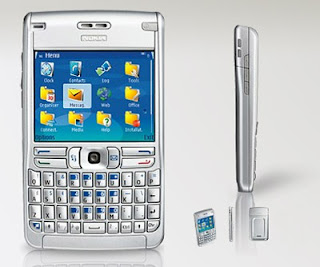Action Icons
Rappelz optionally provides the use of icons for actions, allowing them to be assigned to a hotkey. Some other actions may also be used through the use of icons (those available in the control window).
Lak and Chips
A Lak is magical energy from monsters and can be obtained by defeating monsters while wearing the appropriate necklace. This necklace will be available fairly early in the game. Gathered Lak can be consumed if the player dies, preventing him to lose experience points (the amount of Lak consumed increases with the level of the character), or can be traded at any Lak Trader for either chips or in-game currency, rupees. Lak Traders also provide the option to buy chips with rupees. However, it is more cost-efficient to obtain chips via Lak.
There are three types of chips: Force Chips, Soul Chips and Luna Chips. These chips are items that characters can use to significantly affect a battle by increasing the amount of damage the target takes for a limited amount of time. They come in different ranks which allow different levels of users to use chips. Force Chips increase physical damage, Soul Chips increase magical damage, Luna Chips affect both physical and magical damage, but cost slightly more than Force and Soul chips.
Items and Equipment
Equipment in the game have their own level and can level up by means of upgrading. Items that are able to do this display a section at the bottom of their status window showing the upgraded status effects, allowing players to know ahead of time the quality of the equipment. By visiting a Blacksmith, which is available in every town, players are able to upgrade their currently equipped (and upgradeable) equipment for a fee.
In addition, combinations of equipment with the appropriate enchantment cubes can further increase its potency, and as is the case with weapons, even be reflected graphically through a glow effect. This is called 'enchanting' an item. A weak weapon or armour can be formed into a stronger item without having to sell it and buy a new one. This can also substantially increase both the item's in-game market value. The only non-equipment item that can be enchanted is the skill card.
Items can also be improved by 'socketing' Soul Stones. This is done by visiting a Soulcrafter. Soul Stones are drop items that cannot be bought from any NPC. When socketed, they will increase one of the primary stats of one's character, if three conditions are met: the equipment with the Soul Stone is equipped, the Soul Stone's level is lower than or equals the character's level, and the Soul Power of the equipment is charged. Soul Power can be charged at the Soulcrafter of each town, and will be paid in Lak. Most equipment has two sockets for Soul Stones, however two-handed weapons have four.
Pet System
One of Rappelz's defining features is its Pet system. Pets are creatures that adventure alongside players, aiding them in battle. They come in many varieties, and can be made to fulfill numerous roles. Additionally, pets have many of the properties of player characters: they gain levels alongside their owners, learn different skills, and can make use of equipment.
Pets can be used by all races and classes: the only requirement being two skills, Summon Creature and Creature Control, which are available early in the game. The basic classes (Rogue, Guide and Stepper) and fighter classes have little emphasis on creatures through the availability of creature affecting skills while the others, especially summoner classes (Breeder, Spell Singer and Sorcerer) can affect creatures more greatly.
Pets are attained by taming a pet while having the appropriate card for that pet in the player's inventory. The three most basic pet cards can be bought in any town, while other cards are only found from defeated monsters. Once tamed, pets can be summoned and banished at will by their owners.
Upon reaching a certain level, pets can "evolve" to a different type. A pet evolves twice during its lifetime. Additionally, pets can learn skills at higher levels that allow them to be used as equipment, augmenting their owner's power. There is also a feature known as "overbreeding" which requires a somewhat longer time to achieve. Overbreeding grants pets more job points and stats than non-overbred pets. Overbreeding begins after a pet can evolve but not allowing the city tamer to evolve it. Generally if a pet is not Overbred, it is considered worthless to players wishing to buy a pet.
Current Pets
The
Rappelz Reference Guide lists the pets in order of taming chance, using tiers. As of Epic 4, pets from tiers 1 through 3 are considered Basic, and tier 4 pets are considered Rare. Pet cards for pets from tier 1 can be purchased from NPCs, pet cards for tiers 2 through 4 are drop-only items (though sometimes they do appear in the Cash Shop as bonus items on special packages). tier 1, 2 and 3 are all listed as "basic" on their pet cards, however different drop rates and tame rates may put them into different tiers as shown below. Each pet has a specific 'Unity' which is a toggle self-buff for itself and its owner. The rarer the pet, the better its unity.
Tier 1 (Basic):
Pantera: A muscular tiger creature. It focuses on movement speed and physical attack. Its unity adds P.Atk.
Poultry: A large chicken creature. It focuses on attack speed and accuracy. Its unity adds Acc.
Tortus: A giant tortoise creature. It focuses on defense and high hp. Its unity adds P.Def.
Tier 2 ("Common"):
Red Pixie: A small red glowing fairy. It has very high magic (fire) damage capabilities but has low defenses. Its unity adds M.atk.
Orc: A green humanoid creature with high attack and defense. Its unity adds P.Atk and P.Def.
Blue Pixie: A small blue glowing fairy. Great healing abilities, but low defense. Its unity adds MP.Recov.
Siren: A beautiful humanoid female. It has abilities to debuff enemies. Its unity adds Acc and M.Acc.
Skeleton: A skeletal warrior. It has fast physical attacks and extraordinary damage-dealing capabilities. Its unity adds Atk Speed.
Yeti: A white yeti creature with a mask. It has remarkably high defense and health. Its unity adds P.Def
Wolf: A gray wolf. It has very high evasion. It's hp and mp are not very high. Its unity adds evasion.
Tier 3 ("Un-Common"):
Hawkman: A bird/human hybrid resembling an avian. Its skills and abilities focus on high physical attack and high physical defense. Its unity adds P.Atk and P.Def.
Salamander: A red bipedal fire-based lizard. Its skills and abilities are based around high damage dealing potential in both magical and physical areas. Its unity adds P.Atk and M.Atk
Harpy: A bird/human more resembling a winged archer. Its skills and abilities focus on high dexterity and p.atk, but low p.def. It also has very low HP and MP. Its unity adds attack speed.
Tier 4 (Rare):
Angel: An angel-like creature with wings. It focuses on healing with great defensive potential. It also bears several magic attacks of notable power. Its unity adds M.Atk and P.Def
Kentauros: A centaur equipped with a spear. Its strength lies in enormous physical attacks and fantastic damage-dealing potential. Its unity is P.Atk
Cerberus: A three-headed dog creature. It focuses on extremely powerful physical attacks and high attack speed. Its unity adds P.Atk and Acc.
Gnoll: A bipedal hyena creature, which focuses on good block rate and p.def. Its unity adds block chance, block power and also P.Atk.
Tier 5 (Unique):
White Dragon: An ice-themed dragon creature. White Dragons have higher defense and magic attack (and thus damage) than any other pet, making them simply "the best". They are also nearly unheard of in terms of rarity.
Mystic Koala: A koala type beast. Has the 2nd highest defense of all pets and boosts on the user's chance to score a critical hit. It is the only pet that can be obtained without having it tamed.
Purchased from the Ursa Caverns Shop Dealer for 1,000,000 Gen Points. This pet's unity increase does not increase the chance for more or better loot because luck is unrelated.














